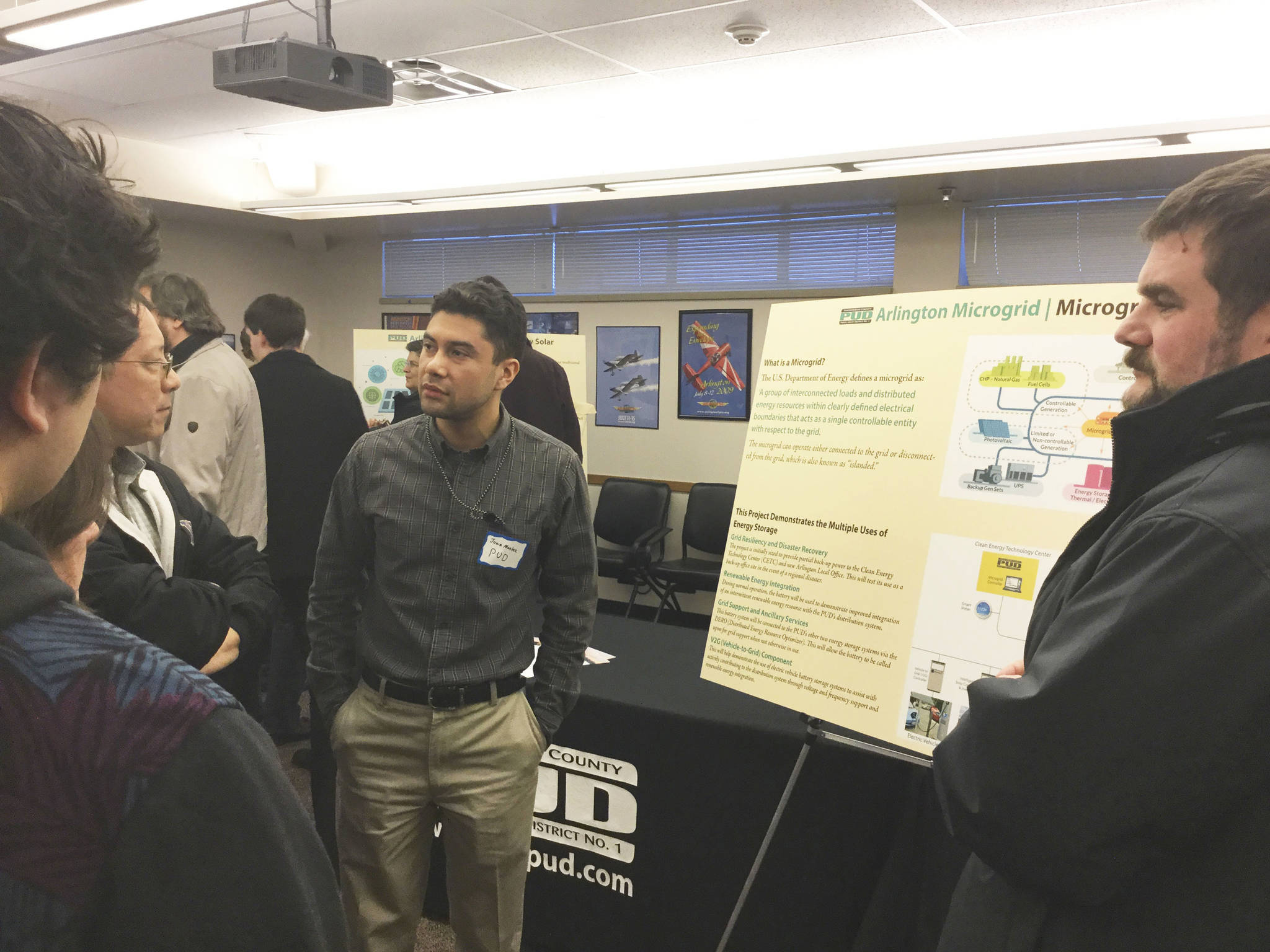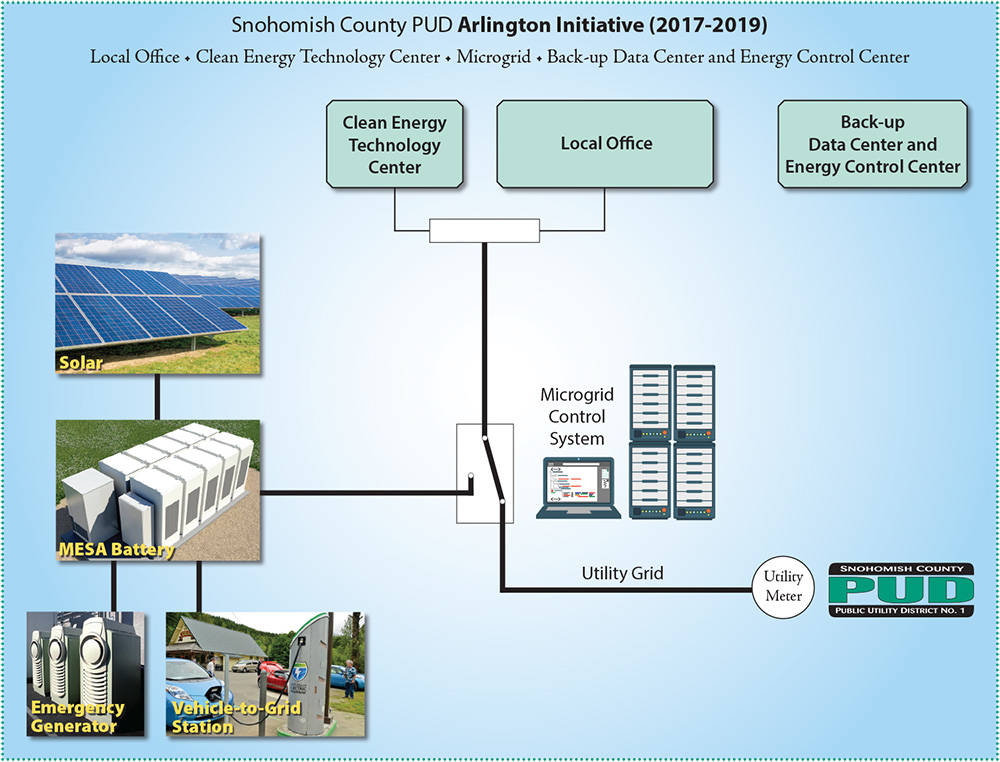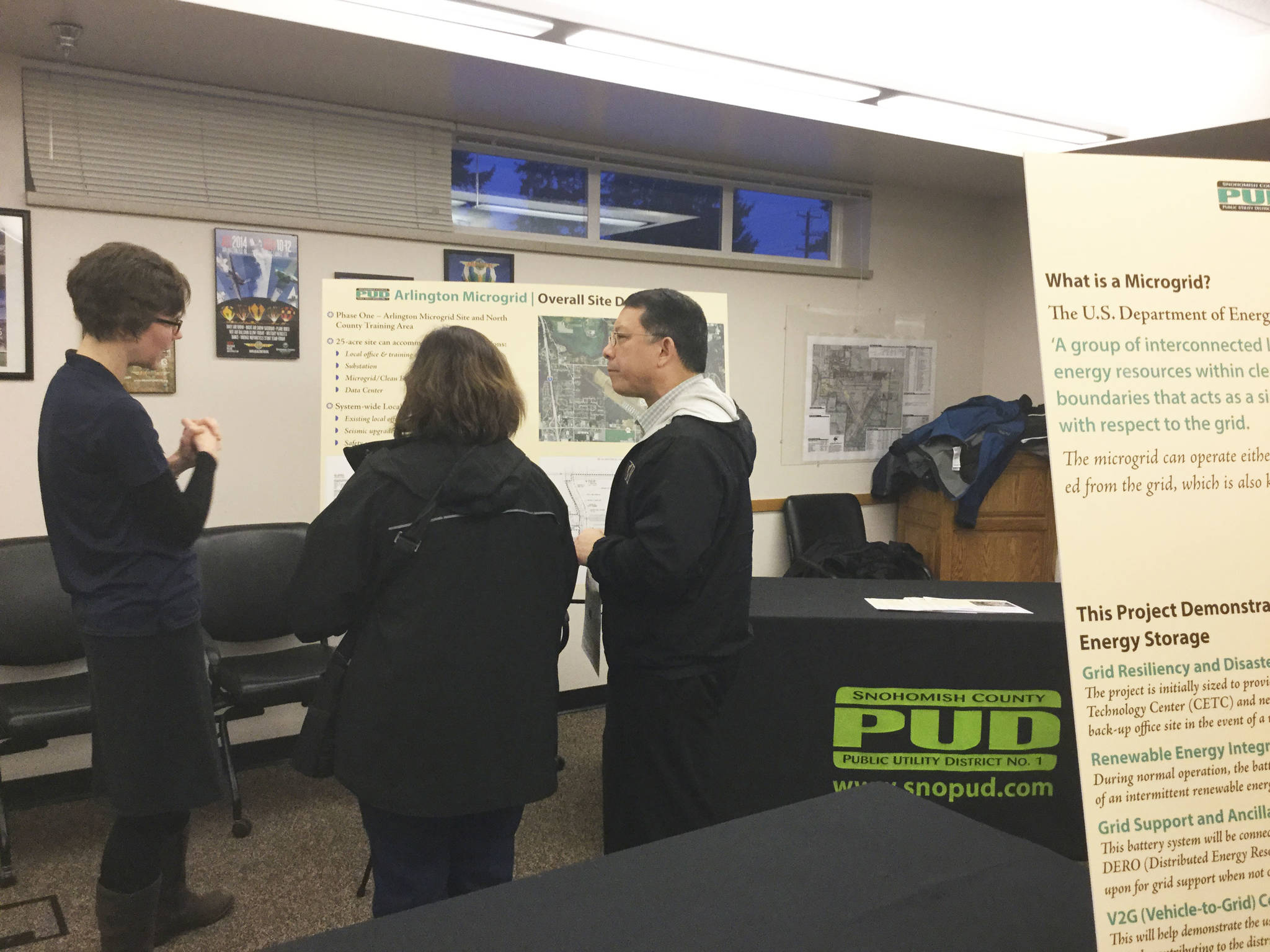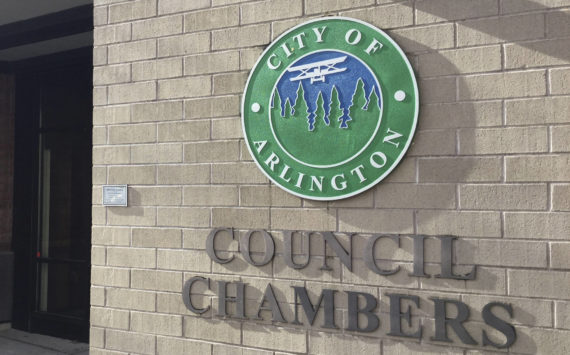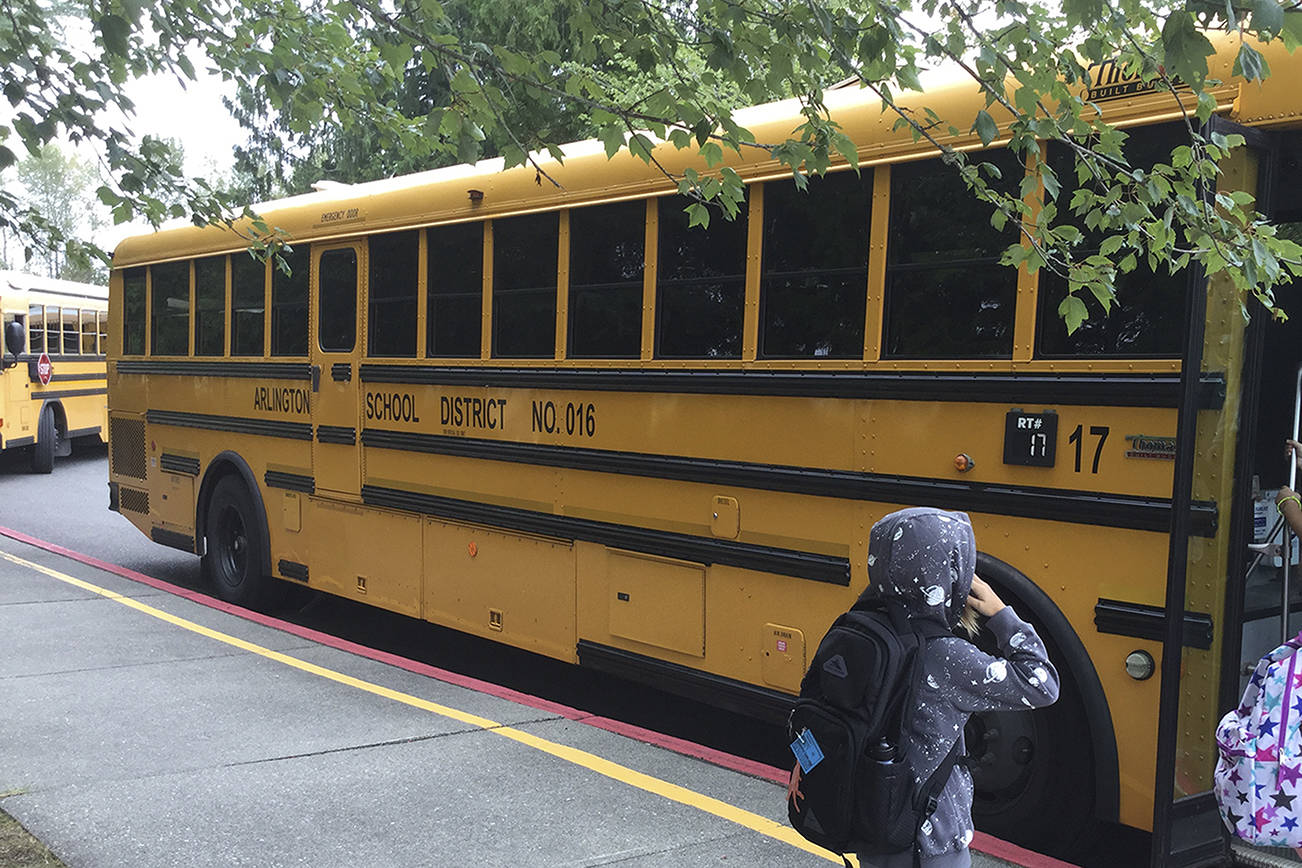ARLINGTON – Arlington resident Mark Kirschenbaum knows a thing or two about new clean energy technologies and their potential to transform the energy landscape.
As Assistant Director of Campus Utilities at the University of Washington, he helps oversee a Seattle campus that essentially operates it’s own power plant that uses steam turbines and solar power to heat the buildings, yielding cost-savings and reducing carbon emissions.
He was pleased with plans he learned about at Snohomish County PUD’s open house on Wednesday to showcase the coming Arlington Microgrid and Clean Energy Technology Center.
PUD plans to locate the microgrid and technology center, new local office and training center, vehicle-to-grid charging station for the utility’s electric fleet, battery storage, a substation and backup data center on 25 acres east of the Arlington Airport at 17601 59th Ave. NE.
The $9.5 million project funding in part through a $3.5 million Washington Clean Energy Fund grant includes a multi-acre segment that would cover the ground with a 500-kilowatt array of solar panels tied in with a proposed community solar program, one of the state’s largest, that would generate the largest amount of solar energy within the PUD’s entire service area.
“I know about the technologies out there like they’re planning, but this is local investment, right here in Arlington,” Kirschenbaum said. “I love to see that” here in my hometown.
A microgrid is a self-contained, small island of electric power generation, storage and distribution inside an existing power grid such as PUD’s, which can keep operating independently even when the larger utility goes down, officials said.
The microgrid’s focus is disaster recovery and grid resiliency, said Juan Montez, PUD systems and project engineer. That carries benefits for PUD’s north end customer base stretching from Marysville to the communities across the Stillaguamish Valley, and Stanwood and Camano Island.
Montez said that if a major disaster such as a Cascadia Rising-type of earthquake struck the region causing significant long-term damage and downed transmission lines, “We would still be able to operate from our Arlington office and be able to dispatch crews.”
The Arlington Microgrid could sustain the local office in the interim, which could also function as an emergency operations center, with the added benefit of being located close to the airport.
Montez said grid resiliency is on a less epic scale, where storms or heavy winds cause localized outages that require the office and crews to keep up and running.
PUD also plans to add a few electric fleet vehicle charging station that can both charge the cars as well as enable energy stored in them to flow back into the grid to provide support during an outage.
The Clean Energy Technology Center will be used to demonstrate microgrid technology and help educate young people and the public about clean technologies in the energy world and how they can work together to reduce society’s carbon footprint.
“Usually, anything to do with utilities is a big mystery,” said PUD spokesman Neil Neroutsos “This kind of project raises awareness. It’s great for everybody.”
Montez said there is a lot to like about the project as a look at things to come.
“This project is on the forefront of the electric power industry,” he said. “This is up and coming technology. We’re looking toward the future for our customers’ best interests, and the benefits and advantages our new technology will bring.”
Neroutsos said electric power doesn’t always align with when you need it most, so having storage capacity is important.
“Whether its solar or wind, if we get it we want to be able to store if for a rainy day,” he said.
PUD Customer Renewable Project Manager Suzy Oversvee talked to several interested attendees about a community solar program in the works that wouldn’t require a rooftop or home ownership to reap the benefits of solar energy.
The way it would work, she said, PUD would develop a solar power array at the microgrid site and enable customers to purchase “shares” through a subscription process. Each share would provide the customer with credits for their portion of the solar array’s production, with shares priced to recover the cost of the solar array.
The Arlington array would start with 500-kilowatt capacity with the potential for expansion, and participating customers would receive monetary benefits on their monthly bill, Oversvee said. Kirschenbaum is interested. He would buy into it the program.
“The idea of buying credits, I think that’s a great idea,” he said.
PUD officials said the project is anticipated for completion in 2019-20.
